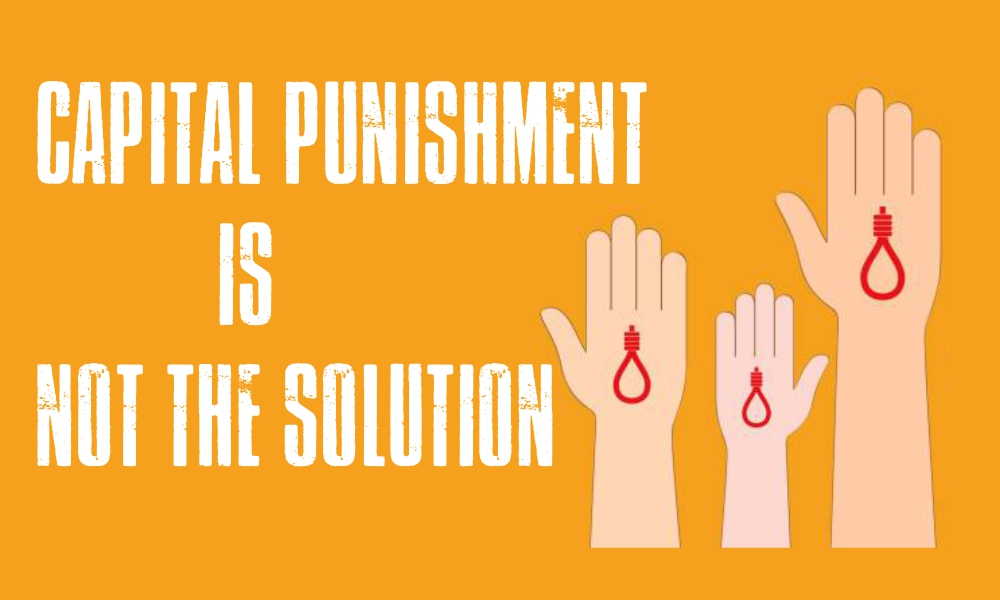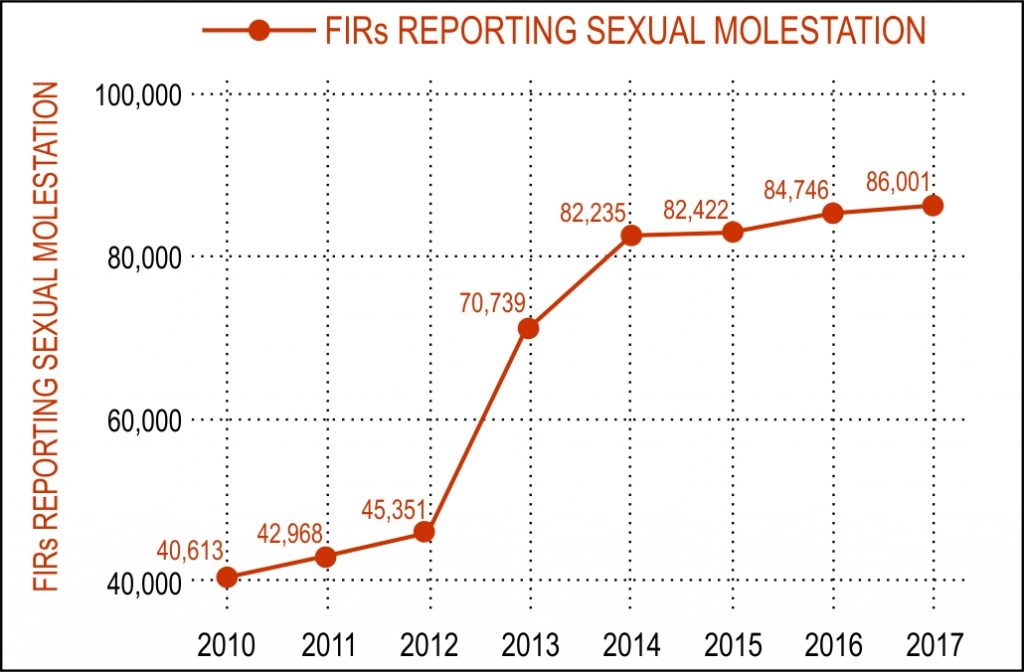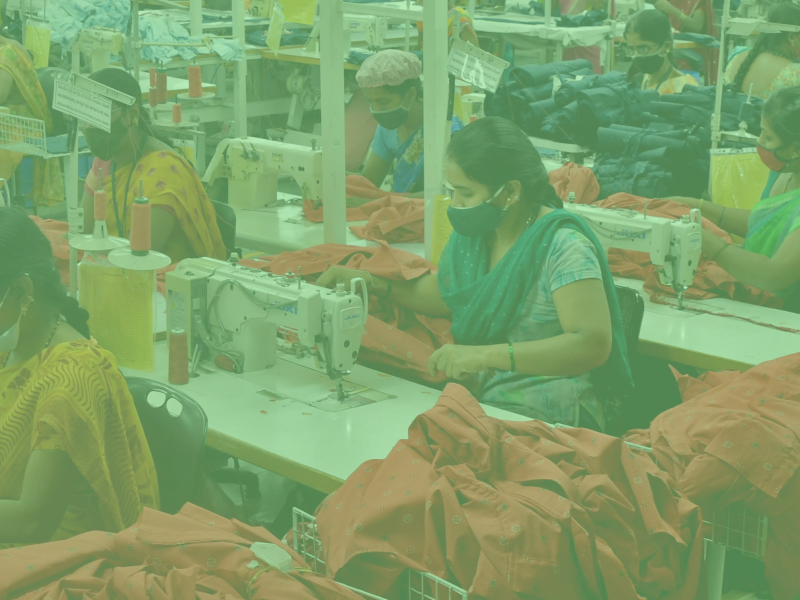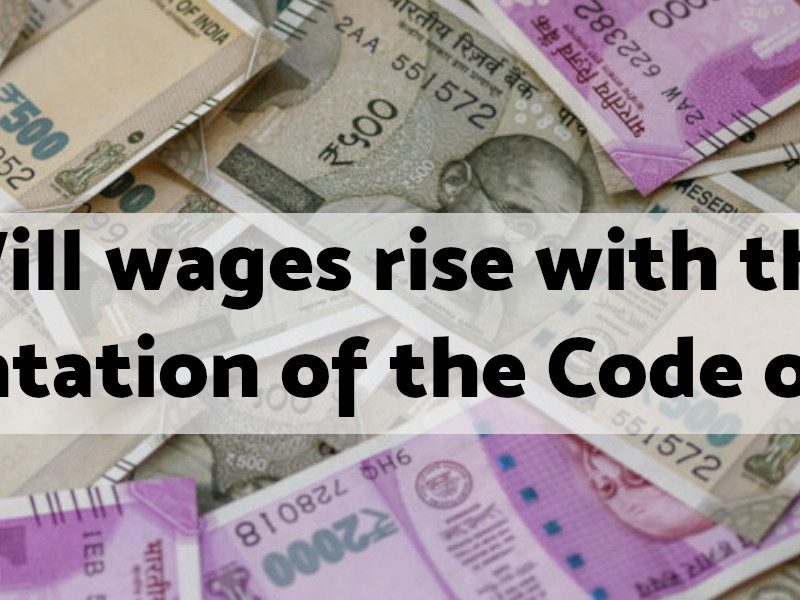…This murderer deserves nothing more.
He no longer needs to live,
for his life is meaningless.
Who am I to decide this?
If not a murderer,
then who am I,
the man who pulls the switch?
Capital Punishment, Azavel, 2011
On 5 March 2020, a trial court issued warrants for the execution of the 4 convicts in the gruesome rape case leading to death of the 24 year old physiotherapy intern in 2012. The bone chilling incident which took place in the national capital sparked outrage across the country and stirred a debate about one of the most important and yet the most neglected issues in our country – crime against women. So, when the order regarding execution of the 4 perpetrators was read out on 5 March, just 3 days before the International Working Women’s Day, social media and news platforms were abuzz with ‘justice finally being done’. However, many other cases remain pending with similar gory details of rape followed by murder. Godmen, politicians, bosses, close friends and relatives, even fathers, husbands, brothers and sons are in the line. Will this execution, as it is meant to do according to the strongest advocates of capital punishments, instil fear in the minds and hearts of all men so that such cases of brutality are not repeated in the future?
Statistics as seen above is not able to support such claims. There has been a steady rise in the number of cases of rape in the country even after 2012 despite severe under-reporting of cases of violence against women.
Noose for those who have been found guilty is a solution put forth by the same patriarchal framework which is at the core of crime against women. Capital punishment reinforces patriarchal values of masculine power, control and subjugation of the other. The alleged encounter of 4 rape accused in Telangana in December 2019 is a classic example of this idea of justice being served. This form of justice clouds the real problems that lead to violence against women and cheers the display of masculine bravado which completely violates the rule of law by those who are supposed to be its custodians. It reflects clearly in the judgement of the Apex Court where the judges note that capital punishment has to be awarded even in the lack of substantial evidence because it quells the ‘public conscience’. In all these cases justice is merely seen to be done rather than to be done actually. The state selectively murders the poor and marginalised (in the Nirbhaya case the convicts were daily wage labourers so were the accused in the Hyderabad case) so that the larger debate and the prevalent everyday horrors of patriarchy can be shoved under the carpet. This form of justice allows all of us, who contribute in strengthening this patriarchal system through our words, silence, action as well as inaction, to sleep in peace and believe that justice has been served while comfortably ignoring the impact this form of justice has in perpetuating crimes against women.
Our courtrooms are replete with cases wherein the criminal justice system fails the victim when the perpetrators are powerful men. The gender-caste-class bias of our judiciary was unmasked in the infamous Bhanwari Devi rape case. Bhanwari Devi, a Dalit healthcare worker in Rajasthan was gangraped in 1992 by upper caste men for preventing a child marriage in their family. The men were especially angered at such an act by someone who was, in their words “a lowly woman from a poor and potter community”. After a tormenting experience with the police and medical officers who messed up the evidence and acted against her, years of social boycott and humiliation by the villagers, the district court ended up acquitting the five accused men in 1995. The court stated that these men could not have raped her as they would not even touch anyone from the low caste to which Bhanwari Devi belonged. The judgement was appealed in the High Court but it has been to no avail. There has been only one hearing in the past 25 years.
However, the Bhanwari Devi case was landmark as it led to a movement that translated into the Supreme Court promulgating the Vishaka Guidelines—outlining mechanisms to deal with sexual harassment at the workplace, and making it mandatory for institutions in the country to implement them. The Vishaka Guidelines were a legal victory by the women’s movement, but Bhanwari Devi has not found justice yet, while fearlessly continuing her fight for justice.
The Vishaka Guidelines later led to the Sexual Harassment at Workplace Act in 2013 but neither the government that legislated the act nor the Supreme Court which promulgated the Vishakha guidelines were able to put in place a system for redressal in crimes against women.
The failure of the system became blatant when a serving Chief Justice abused his powers to influence the internal complaints mechanism of the apex court in a case against him filed by an office staff. The Supreme Court initially had no Internal Complaints Committee to look into the matter. This also revealed the flaw in the law itself which did not specify the need for such a committee for the judiciary. The Chief Justice first presided over his own case and when an objection was raised on this, he appointed a colleague to preside over the proceedings which very swiftly decided that the Chief Justice was not guilty. Interestingly however the complainant has been reinstated in her job from where she was unfairly terminated soon after the concerned Chief Justice retired from service.
In the past similar cases of Supreme Court Justice Swatanter Kumar and the director of The Energy Research Institute (TERI) RK Pachauri have shown us that men who walk in the corridors of power have powerful friends. Which brings us to the elephant in the room – why is our judiciary and legislature failing us so badly?
The answer is simple and the yet difficult to digest. Our judiciary and legislature reflect the society we live in and thus patriarchy defines its core. Since independence only 7 women justices have made it to the Supreme Court. At present there are only 3 sitting female judges out of the total of 34 judges in the Supreme Court.
The legislature fares no better. From 2009 to 2019, there has been a sharp increase of 850 per cent in the number of MPs with declared cases of crime against women in Lok Sabha. A total of 572 candidates with declared criminal offences against women contested in Lok Sabha and assembly elections during the last five years. None of these candidates has been convicted yet. Furthermore, there are only 14.29% women representatives in the Lok Sabha. There is no surprise then that the preventive measures proposed by our legislators range from banning mobile phones (Chairperson of the Legislative Standing Committee on the Women and Child Welfare Department of Karnataka Shakuntala Shetty, MLA, Puttur, has reportedly urged the government to ban mobile phones in all colleges across the state in 2014) to banning noodles and non-vegetarian food (Binay Bihari, MLA from Bihar) to protect women from crimes.
It is no wonder then that these suggestions put the blame for crimes against women on bizarre things including the victim but refused to acknowledge the undelying reason for these crimes. The not so bizarre proposals like installing CCTV cameras and demarcating a section of space as women only (e.g., counters at banks and separate coaches for women in trains) create barriers for women in a so-called attempt to protect them. It leads to isolation of women and propagates the idea that women can never be safe in the company of men. That their safety can only be ensured if someone powerful is looking over their every move (the CCTV camera in this case is just like the father, brother, husband at home keeping an eye on the woman at all times under the garb of ensuring her safety) and that the moment women choose to freely participate in the society beyond the demarcated ‘safe-space’ created by keeping the men out they are responsible for their own safety, in short they are asking for trouble. This constant surveillance has severe adverse mental impact on women and on their capacity to participate in social, political and economic life.
So, if CCTV cameras, over protection and capital punishment are not the solution, what could change the existing structure?
At this juncture it is important to put the spotlight on the force working in the background – Capitalism. Patriarchy is propagated and reinforced by the capitalist market system because it thrives on the subjugation of women, it profits from the inequality between the sexes. On one hand it profits from the unpaid and underpaid work of women at home and at workplaces, on the other businesses make astounding profits from selling beauty products and surveillance devices. Therefore, our literature, music, cinema, advertisements actively promote patriarchal values and establish that the hallmark of a ‘good’ woman is docility and subservience to men. These ideas have got so normalised that women play an active role in upholding the existing system. Women reach positions of power only when they exhibit masculine behaviour. Therefore, we see women bosses behaving no differently than men when it comes to workplaces, at home mothers turning a blind eye to the wrongs of their sons and reprimanding the girl child for not being ‘lady like’. It is therefore, that no institution in our society is untouched by the menace. Our education system, healthcare and even unions are highly patriarchal spaces.
Is there a way out?
Yes. Instances from across the world show us that right education which dispels gendered stereotypes can go a long way in dismantling the existing capital backed patriarchal system for a better world. Norway, the country which has been ranked at the best place for women to live continuously for the last 5 years followed by Iceland, Denmark and Finland have shown us the way in which this can be done. The experiences from these countries tell us that with the collective effort of working people change is possible.
The first blow to the capitalist market is the end of unpaid work by women. Once women are relieved of the unpaid care and domestic work their participation in other spheres increased. This increased participation ensured that the nature of the existing system changed drastically. For instance the highest court has 42% women judges including the Chief Justice. So is the participation in the parliament, the Norwegian parliament almost equal number of men and women senators. Same is the case with Denmark, Sweden and Switzerland. Oh and the safest countries for women do not have capital punishment either. Norway amended its constitution in 2014 to add Article 93 which explicitly reads – “every person has the right to life. No one can be sentenced to death.”
Is it possible to replicate it in other countries, say like ours which are densely populated and don’t have the means. The answer is YES. We have the means, we only lack the political will. Let’s look at how Norway and other countries which fare better than ours in terms of women safety achieved it.
Progressive Taxation: Corporate taxes and personal income tax in Norway ranges between 28 and 78 per cent and 18.5 and 55 per cent respectively. This helps the country fund the essential social services like child care, elderly care, free public health care for all and education. This means women do not have to be bound to their homes caring for children and elderly. India has an increasing number of wealthy people. At present there are 136 billionaires in the country who pay meagre taxes while corporation get tax breaks in the name of creating jobs for people which they have been failing miserably to do over the years. Taxing the rich can ensure a better life for everyone. Privatisation of services has burdened Indian women the most. Our entire health system is dependent on severely underpaid ‘honorarium’ workers and our budgetary expenditure on healthcare and education has hovered under 2% and under 3% of GDP for decades.
Limited hours of work, child care leave and family time: Norwegians on an average work 38 hours a week. Men and women get equal number of days off for child care and men are encouraged to help in domestic work and child care by incentivising paternal leave. Increased family time has shown positive results in combating crime against women. It is also the country with least gender pay gap in the world. Norway recently passed a law that makes gender pay gap a criminal offense.
In India we have worked in the opposite direction. The schemes which were working towards ensuring pay parity and giving women the required financial freedom like the Mahatma Gandhi National Rural Employment Act have been diluted and destabilised in the want of funds. The skill gap has widened and the lack of access to education has been keeping women from moving to better paying jobs. This brings to the light the most important factor – Education.
Non-gendered education to children: The public education system in the Scandinavian countries has the best sex-education modules which begin as school begins and continue till age 16. Schools are encouraged to promote non-gendered living and break the stereotypes at an early age.
It is indeed possible to achieve these by ensuring policy change. Unions can take the lead here. For this the unions must first change themselves from within. The patriarchy has seeped into our unions just like any other institution. Unions need to bring more women in the positions of power rather than creating a women’s wing to deal with ‘those women’s issues’. Address issues of abuse against women with a strict policy than having a passive response to it like the corporates it fights against.
Unions can set an example by educating its membership and changing their existing structures. So that working people and their unions can demand a better public education system which does not reinforce patriarchal values funded by a progressive tax regime so that everybody should pay tax according to their means and receive services according to their needs.
A better coordination with the teachers unions and taking cognisance of the demands of the students union is equally important. In recent times students have come out on the streets against funding cuts and steep rise in fees for higher education. This has not found much resonance among the working class. Trade Unions need to actively partake in these struggles, educate their membership on how a better public education system ensures a just tomorrow for all. A better world for everyone is possible and unions can make it happen.




